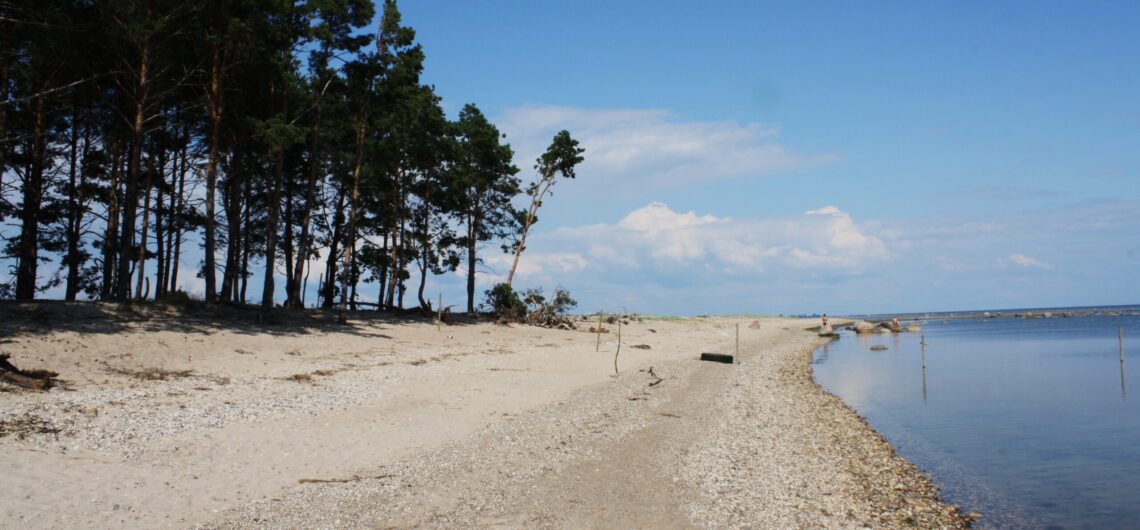Table of Contents


Introduction to Tallinn Bay…
With our sailing trip in Tallinn Bay You could see two islands up closer, both of which have very interesting past.
One of them is Aegna and the other is Naissaar (German: Nargen; Swedish: Nargö). We are going to write about both of them in this blog post…
Aegna island in Tallinn Bay…
Aegna is an Estonian island in the Tallinn Bay in the Baltic Sea.
Geography…
Aegna is 3 square kilometers, and is situated near Viimsi peninsula, around 14 km towards Finland from Tallinn and about 1,5 km northwest of Rohuneeme . Aegna consist of two sandy beaches and a total of 10 km coastline, the highest point of island is about 13 km above sea level.
Attractions…
Being popular destination for day and camping trips Aegna boasts around having 15 km of walking routes. In summer time, there is also open Aegna Meditation and Development Centre.
History…
First written words of the island date back to 1297, when Danish king Erik Menved forbade forestry on the islands of Naissaar and Aegna in Tallinn Bay, altought written accounts are from 1297 Aegna’s history dates back thousands of years. Both Estonia and therefore Aegna was part of Denmark over a century. Aegna’s population over the centuries has been mixed with Estonian and Swedish people, whom most of them were fishermen.
During the time of Imperial Russia, Republic of Estonia and Soviet occupation Aegna was used for military purposes. Remnants of military remains can still be seen today as military watchtower, a large gun base with tunnels and the light railway.
Transport…
With the support from the city of Tallinn, small ferry Juku operates during the summer months to and from the island and beside Juku there is also a boat called “Monica which operates as a sightseeing tour to the island
The island can also be reached by boats or yachts chartered from Pirita Harbour

Naissaar Island in Tallinn Bay…
The island is divided into three sections or villages: Lõunaküla (Storbyn), Tagaküla (Bakbyn), and Väikeheinamaa (Lillängin). There are also some permanent residents on Naissaar who occupy island year round (and some summer residents) in 2011 there were 35 or so permanent residents, in 2005, island had ten residents.
Until the outbrake of the World War Two, the island’s population was about 450 people of Swedish-Estonian origin. These people all fled during the war. Under the Soviet rule Naissaar was off-limits to the public and a military area.
Main military buildings and fortifications are from the period of Russian rule before the World War tho the island’s fortifications plans date back to Peter the Great
As of today, the small houses of the Swedish villages are being restored. Narrow gauge railway that runs from the north to the southern tip of the island is also being restored.
Lighthouse…
47 meter tall present lighthouse of Naissaar dates back to 1960 although first Naissaar Lighthouse was first built in 1788.
History…
The name of the island in Tallinn Bay is Naissaar and english translation to it would be “island of women”. It is possible, therefore, that Naissaar in Tallinn Bay is the island the chronicle of Adam of Bremen mentioned around 1075 under the name “Terra Feminarum“. Fishermen of Estonian Swedish descent were established on the island by the 15th of Century and the erected a small fortress during the Great Northern War in 1705. Russian took over in Estonia after the war and Tsar had a new fortress, with five bastions to defend Tallinn and St. Peterburg built in 1720.
Around the time of 1850 general population of the island grew from 155 people to 188 by the year 1858 most of whom were Estonian Swedes. Around the same year span residents built a new chapel which was part of the Swedish parish of St. Michael in Tallinn.
In the wake of twentieth century, Russia modernizated its fortifications in the Gulf of Finland. But the beginning of the First World War stopped Russians plans to improve Naissaar in Tallinn Bay. Still in 1914 they managed to open a narrow-gauge railway line, with a total trackage of 37.7 km.
Soviet Republic of Naissaar in Tallinn Bay…
By the time the October Revolution ended the Bolshevik rebels suspended provisional government of Estonia, the Maapäev. A local Council of Workers and Soldiers’ Ambassadors assembled on Naissaar in Tallinn Bay, declaring the local People’s Commissar Council on 17 December, which included the Commissioner for War, Home Affairs, Labor, Finance and Health; later Education Commissioner joined their ranks. The Council declared: “In constitutional terms, Naissaar has been designed to be an independent Soviet republic“, naming it the Soviet Republic of Soldiers and Fortress-Builders of Naissaar.
The Soviet Republic of Naissaar was also recognized, at least de facto, by the workers’ government in mainland Estonia, who sent inmates to the island “to fortify some of the castles, clear the railroads, carry snow and dig sand.” Council started to draft a constitution, the capital was the Southern Village and the anthem “The Internationale“. The flag became the red-black flag of anarcho-syndicalism. It was also planned to issue its own money.
At this point the newly formed Estonian Provisional Government appealed to the German army for assistance. The Republic fought both the Bolsheviks and the Germans alike. German forces occupied the island on February 26, 1918, the Baltic fleet evacuated most of its population. Thus the “soviet republic” ceased to exist.
In 1920 The island then became part of the new Estonian Republic
Between the wars…
The Estonian Republic used Naissaar as a naval base. 450 people lived on the island in 1934, of whom 291 were Estonians, most of them were in the Estonian army. The army of the Republic of Estonia continued to use the railway for military purposes throughout the 1930s.
World War II…
The Red Army took over Naissar in 1940, only to have the Wehrmacht occupy it a few months later. The population of Swedish fishermen preferred the Germans, and when the Red Army drove the Germans out in 1944, the last of the Swedish-speaking fishermen took refuge in Sweden.
Post-war…
Post-war the Soviets declared the island off-limits to the public and military area, they used railway to connect the factory to the port. Factory of naval mines which was built by Soviet Union during the period of the Estonian Soviet Socialist Republic
Post-Soviet period…
The Soviet rule in Estonia ended and they left Naissaar in early 1993, they did their damage and burned explosives in the naval mines, leaving destruction behind as multitude of metal casings scattered all over the islands. Many of them were later scavenged as scrap iron, but mines are still visible near the wharf at Mädasadam. Subject to this destruction the island’s soil is and remains contaminated by oil and heavy metals. Yet another legacy left by the soviets arms industry.
Naissaar Landscape Conservation Area was established in 1995, occupying the entire area of the island.
Come join us on Tallinn Bay and see those historic islands closer…
Both islands in Tallinn Bay are very much filled with history and to be even more exact military history. Both of them served as a first defence of Tallinn and in many occasions as St. Petersburg. Peter the Great of Russia was the first to fortify Naissaar and this countinued throughout centuries after. So its very worthwhile to see Aegna and Naissaar upclose.



Comments